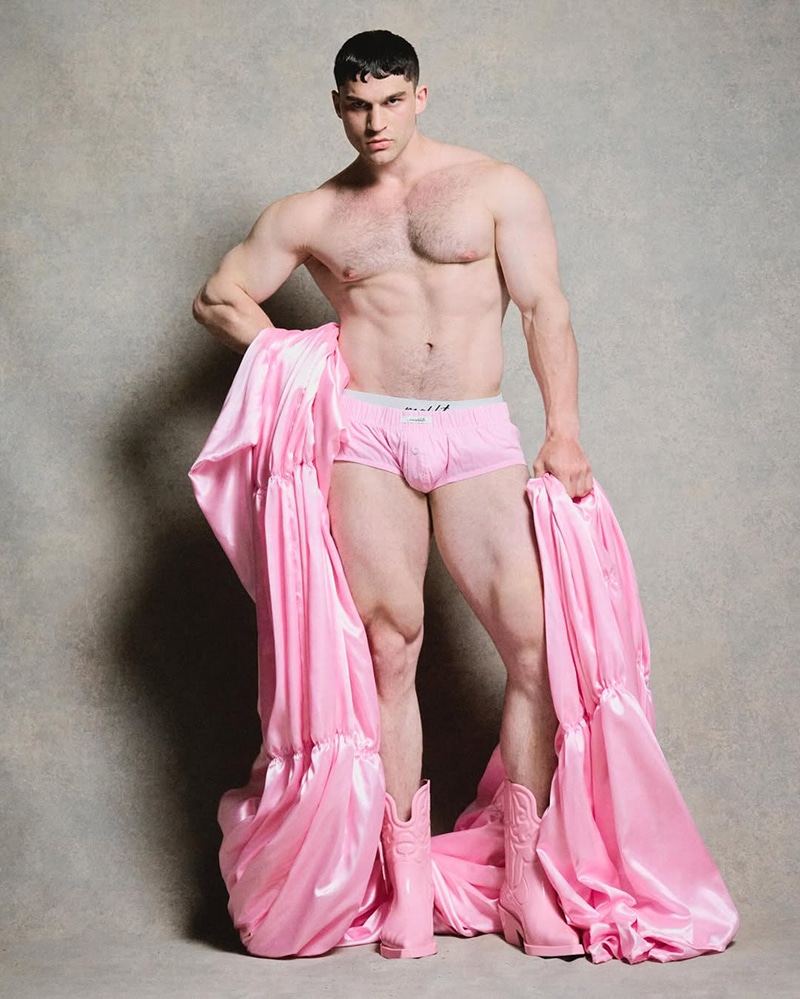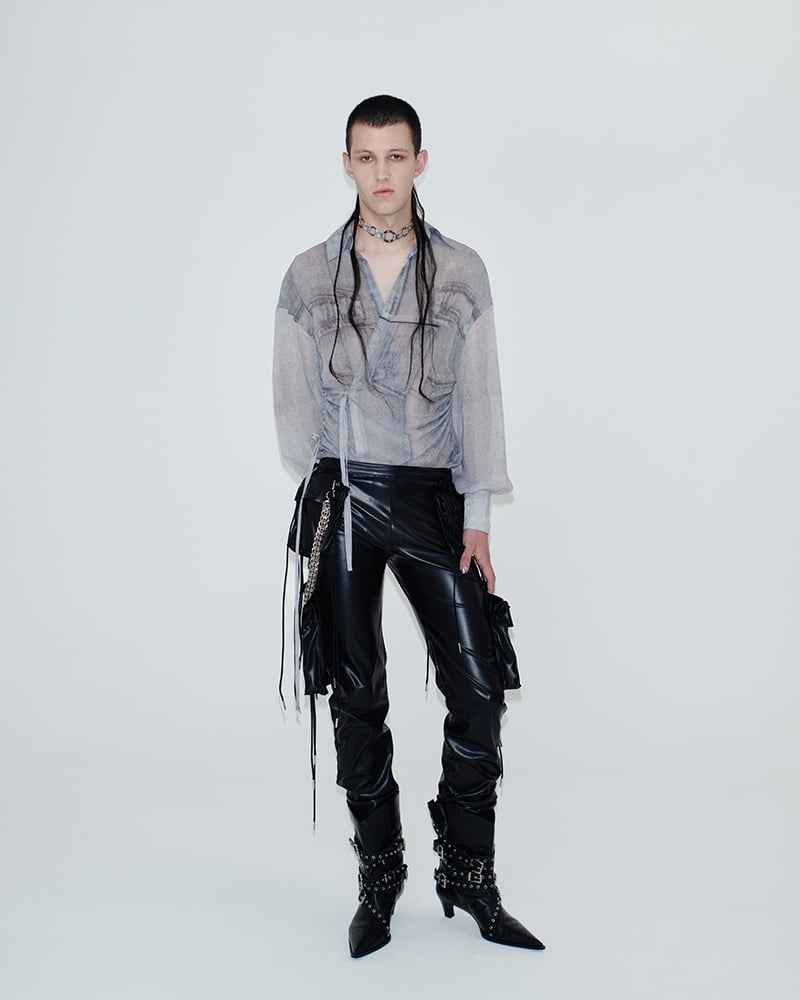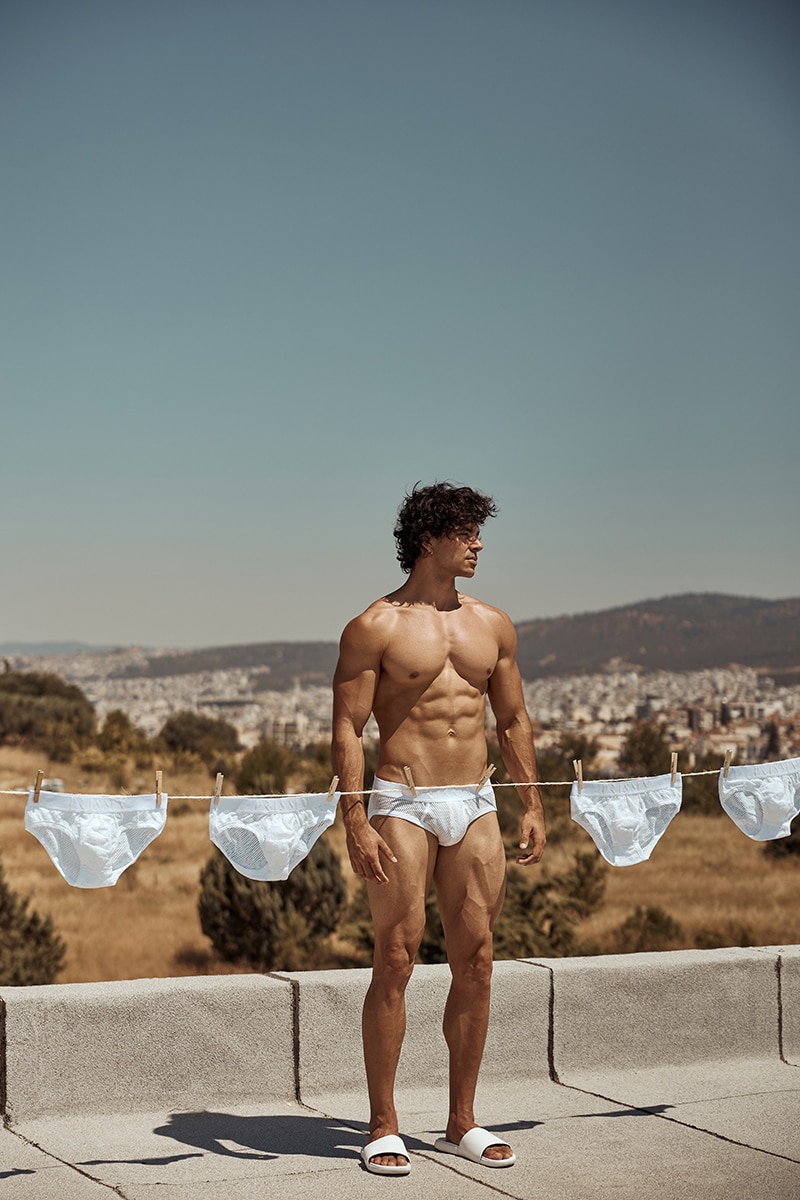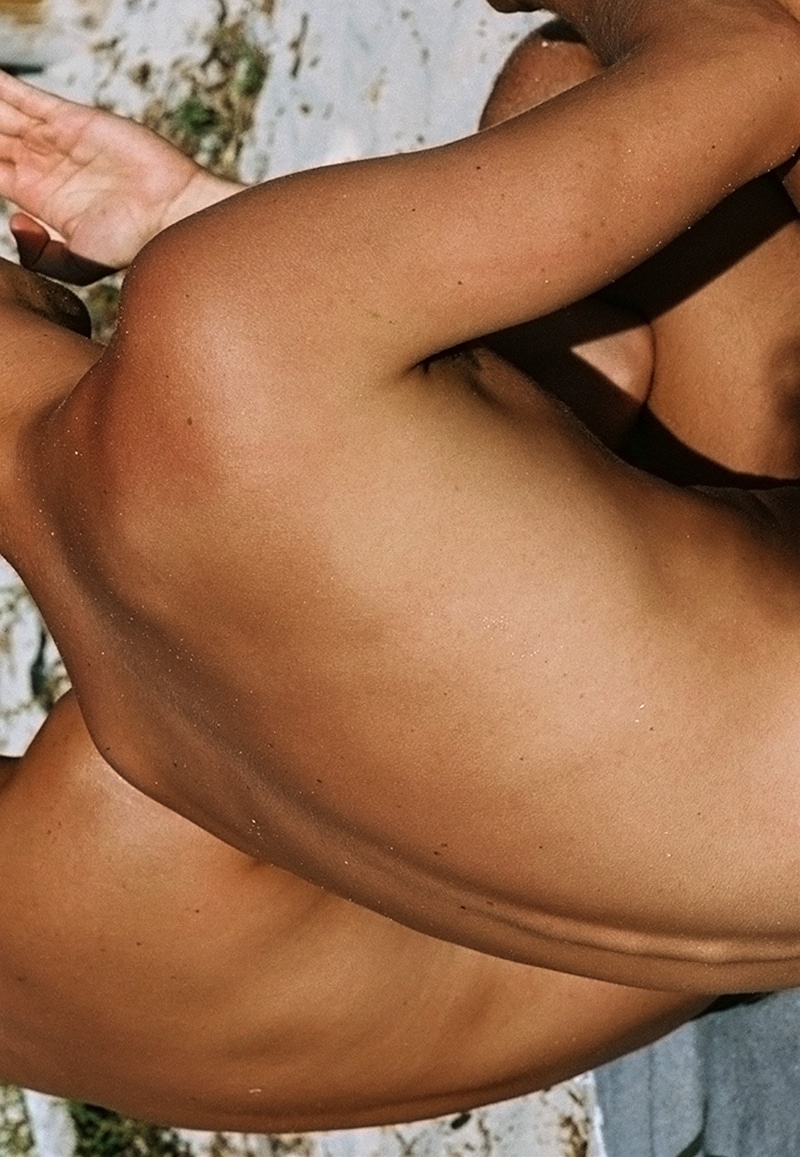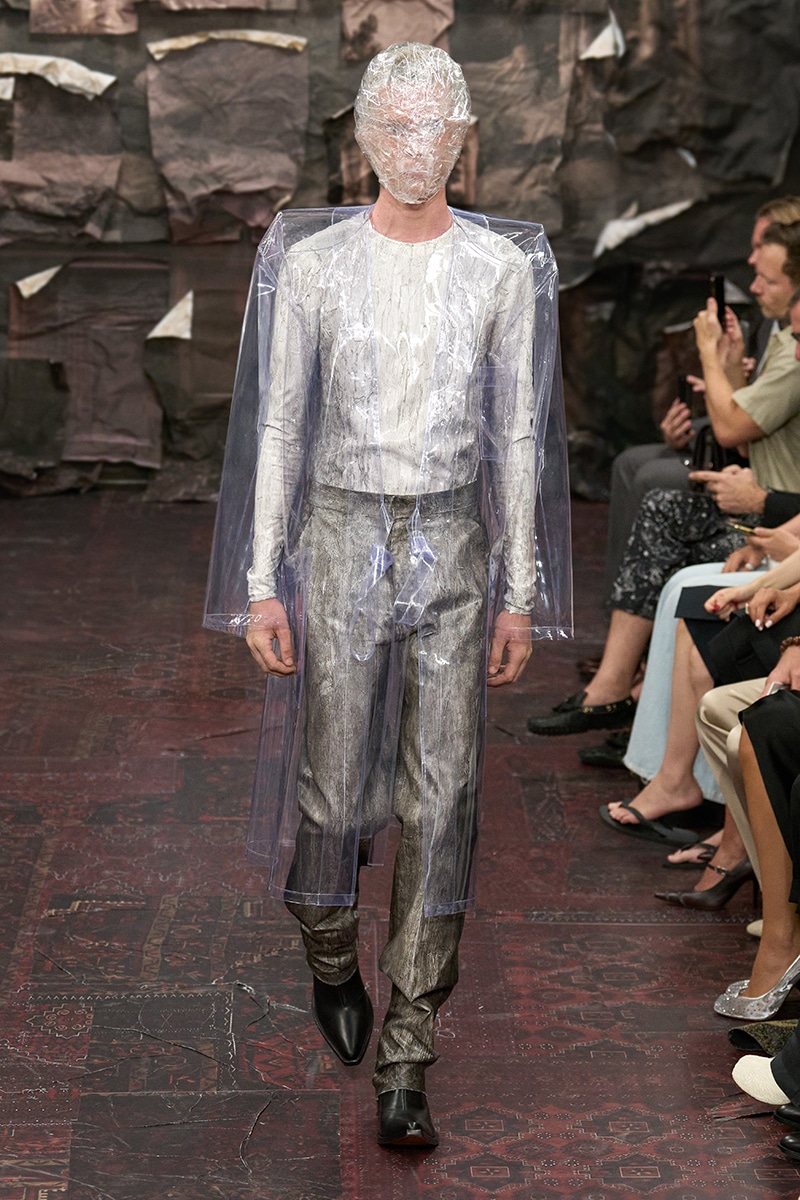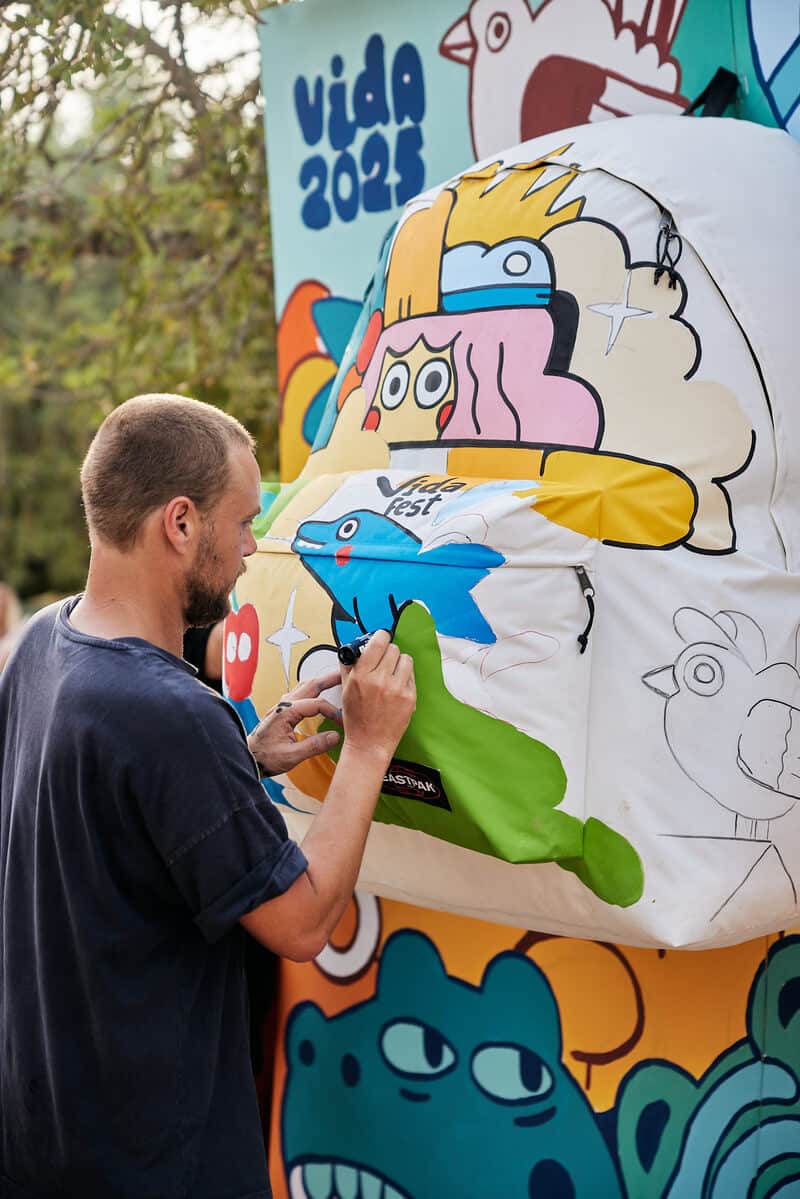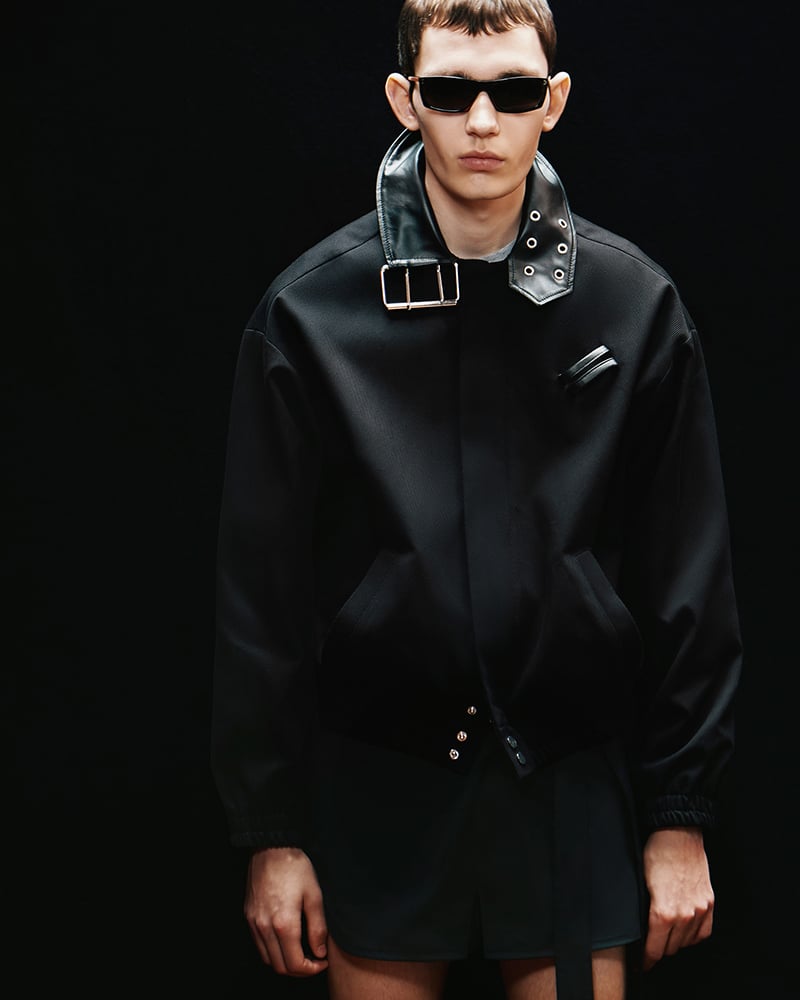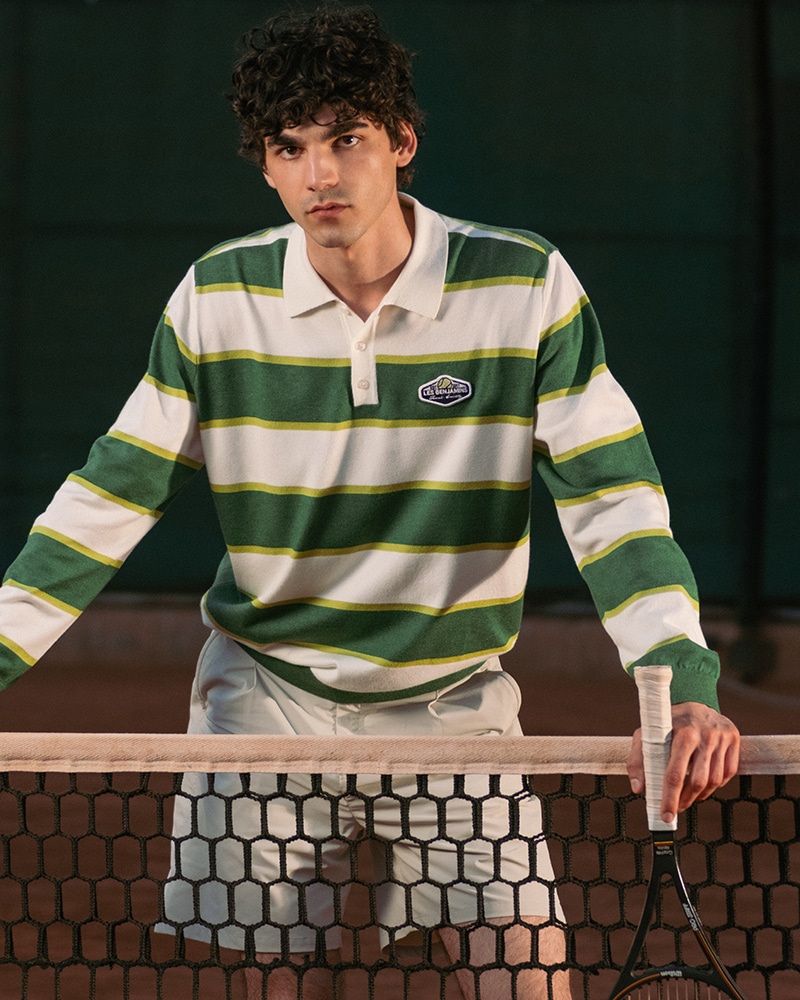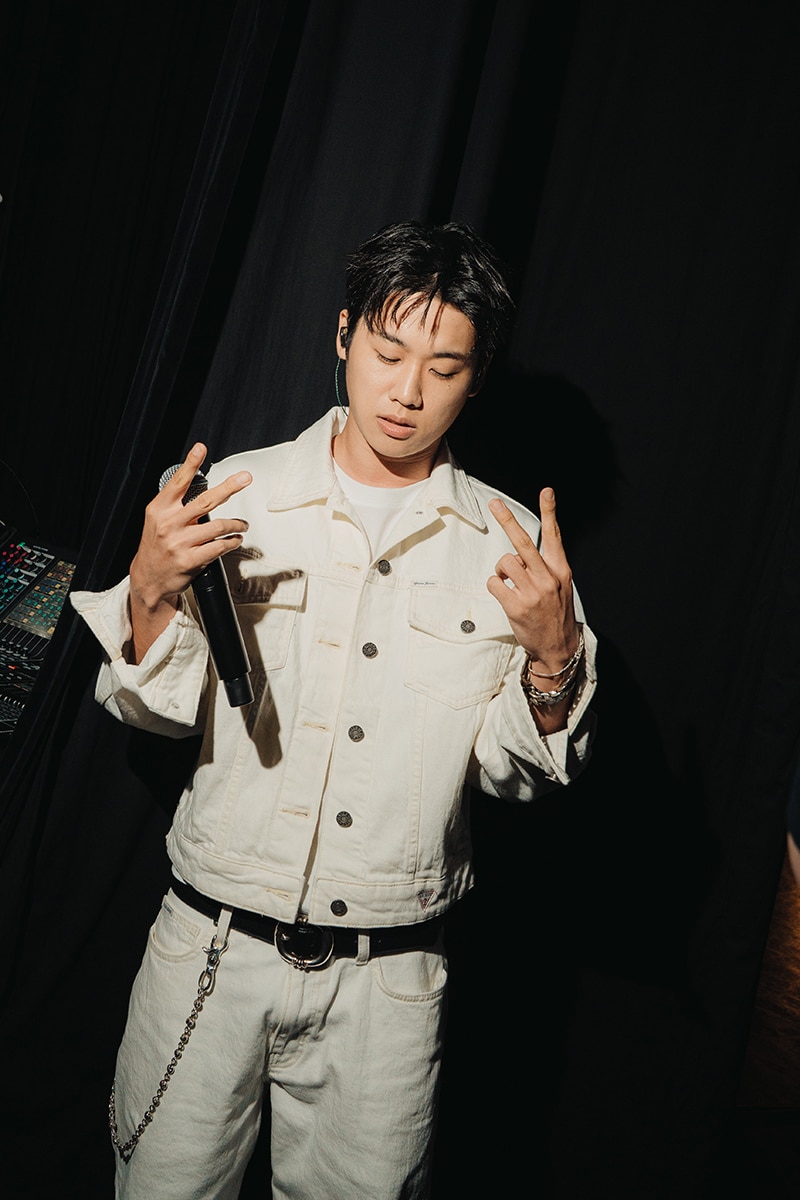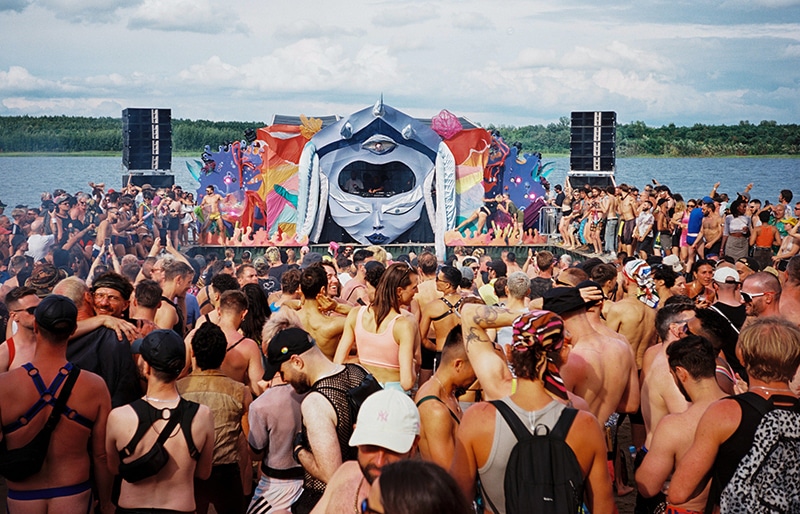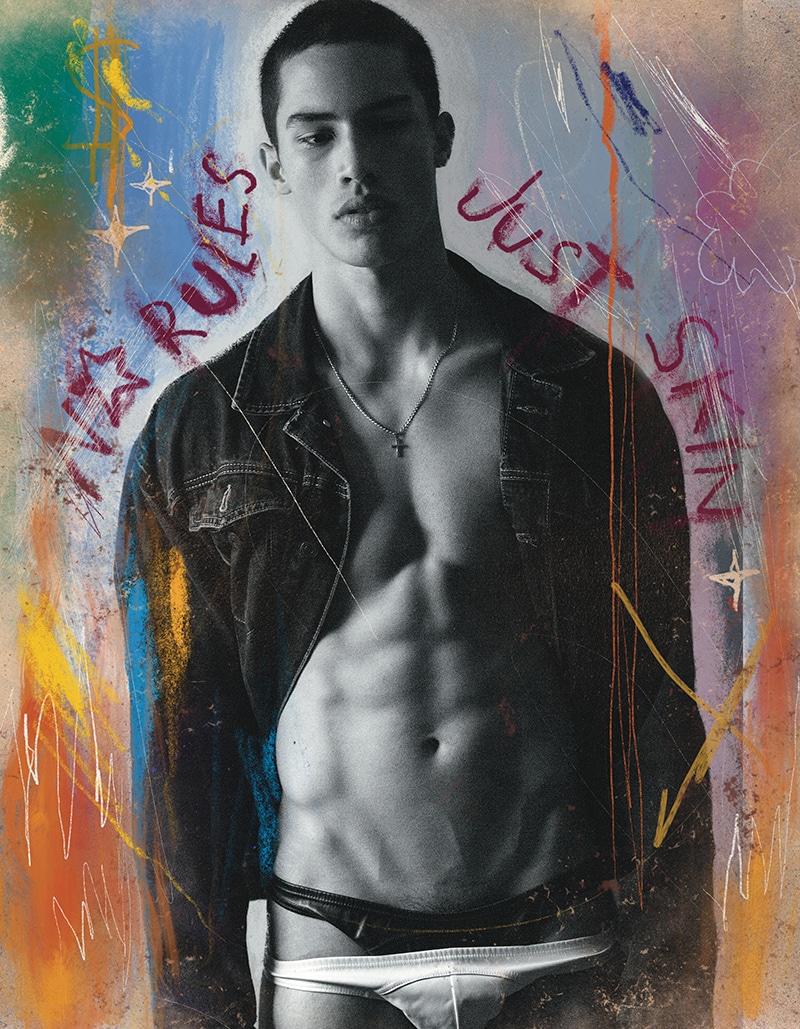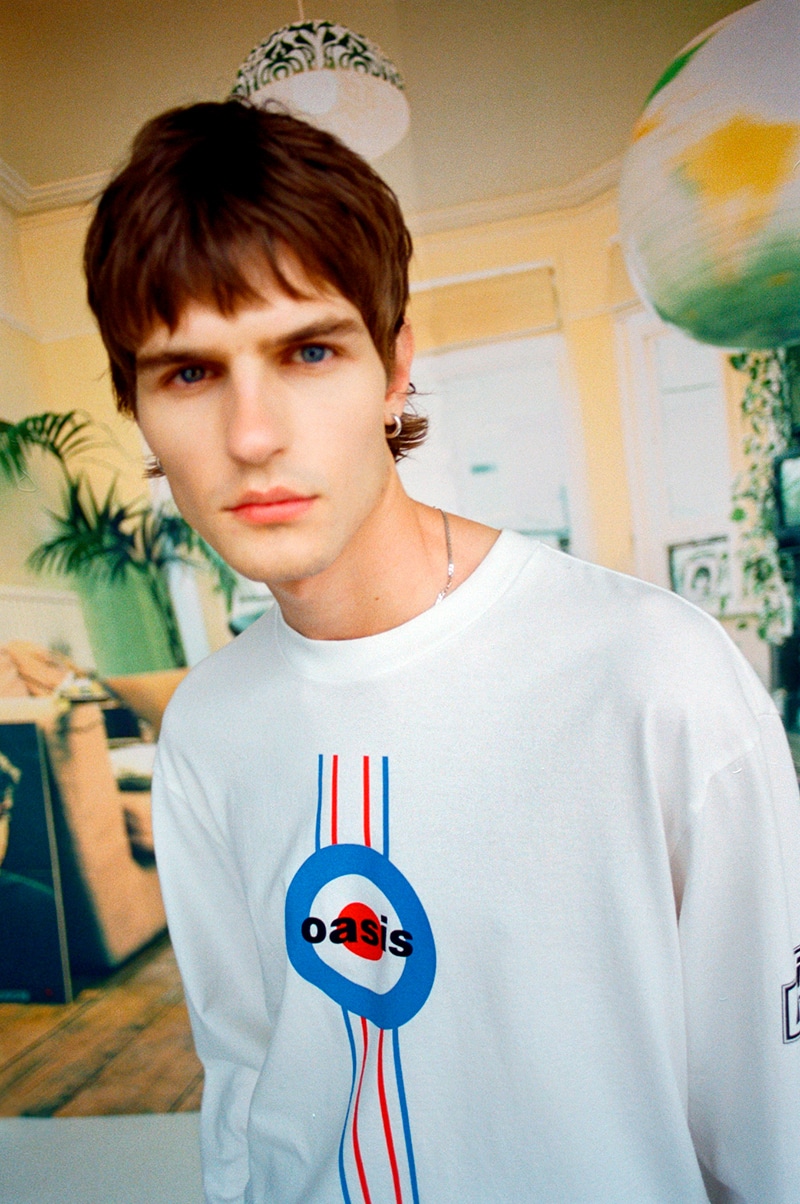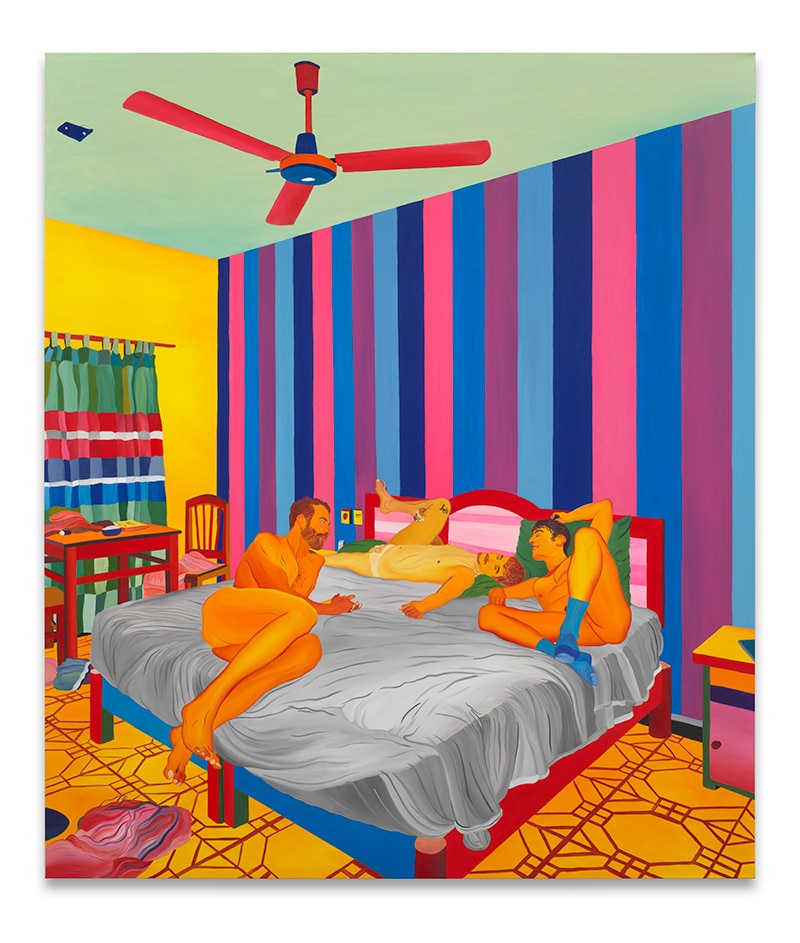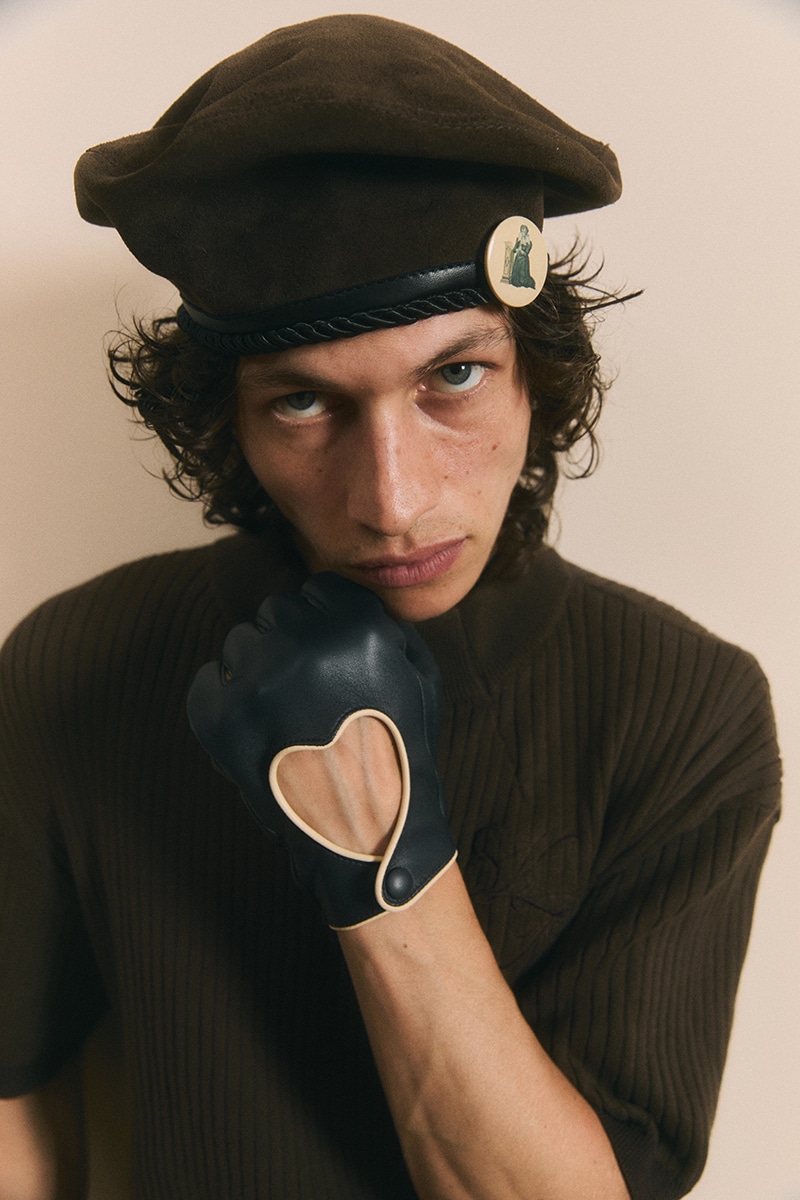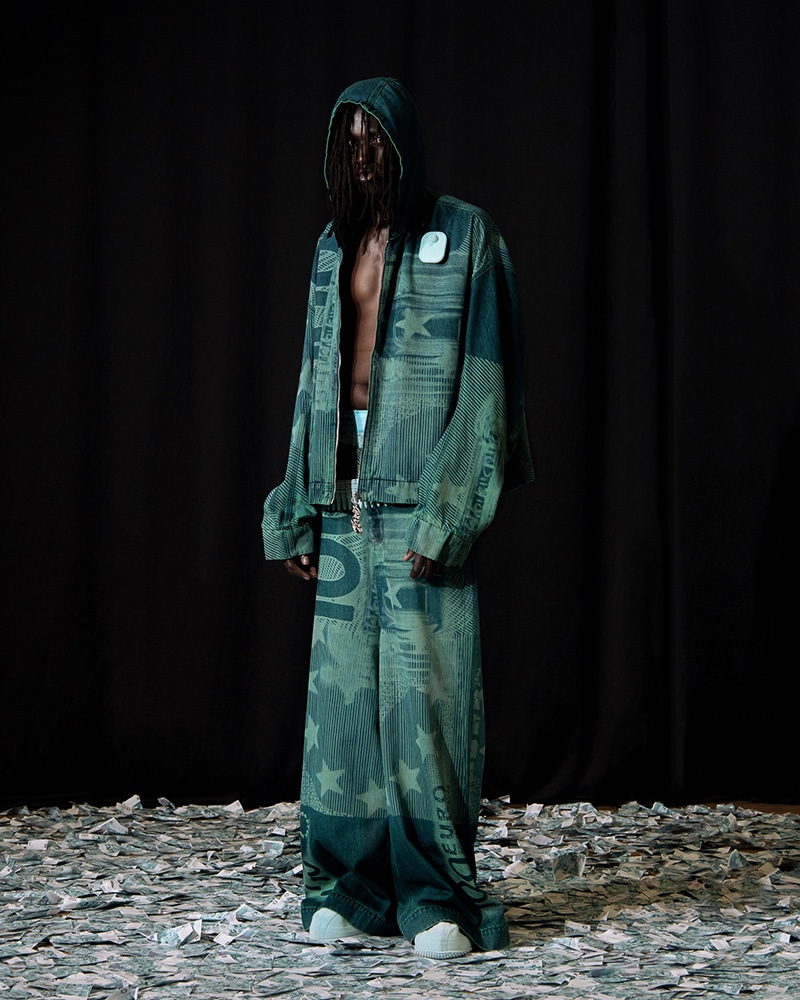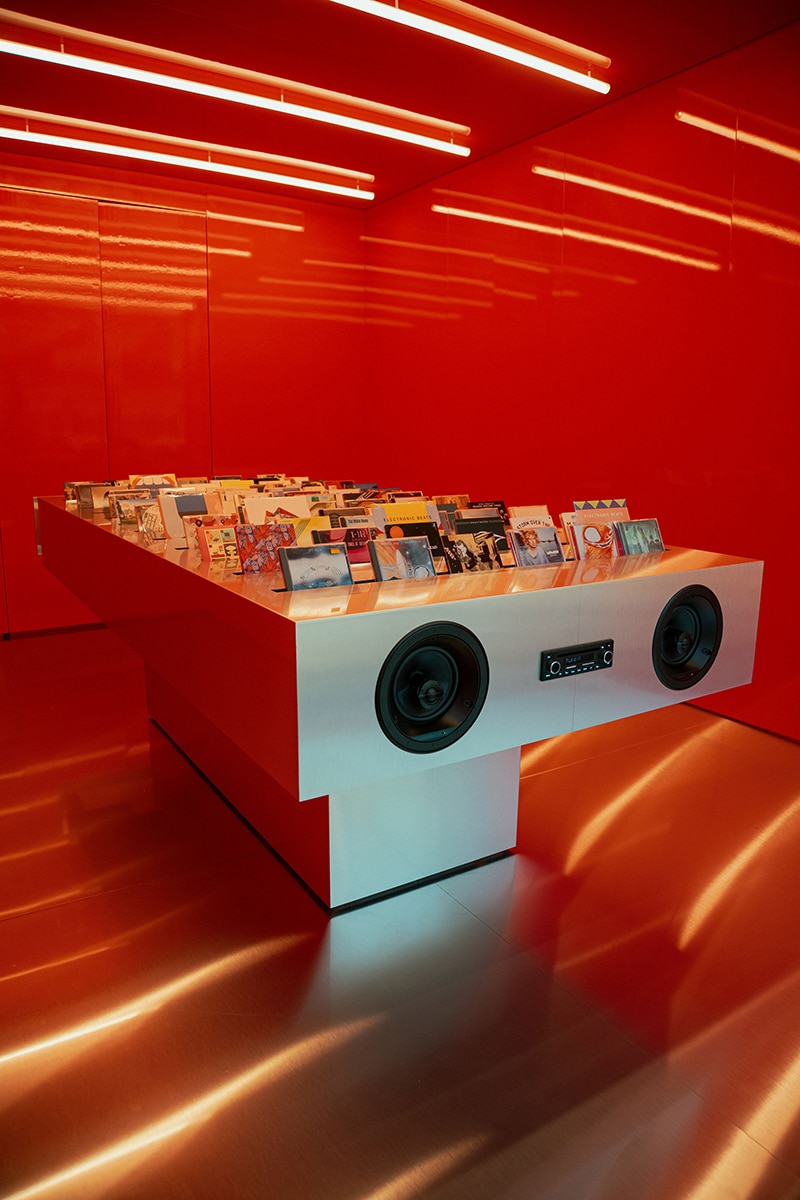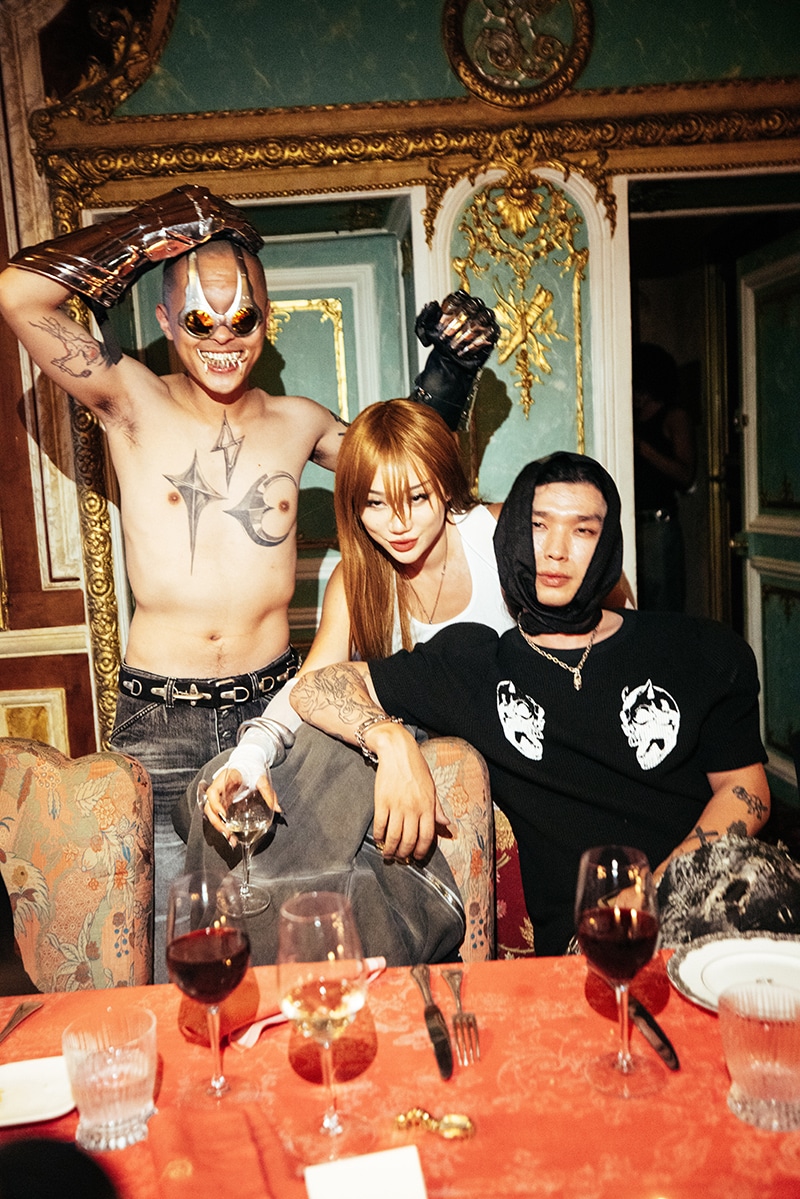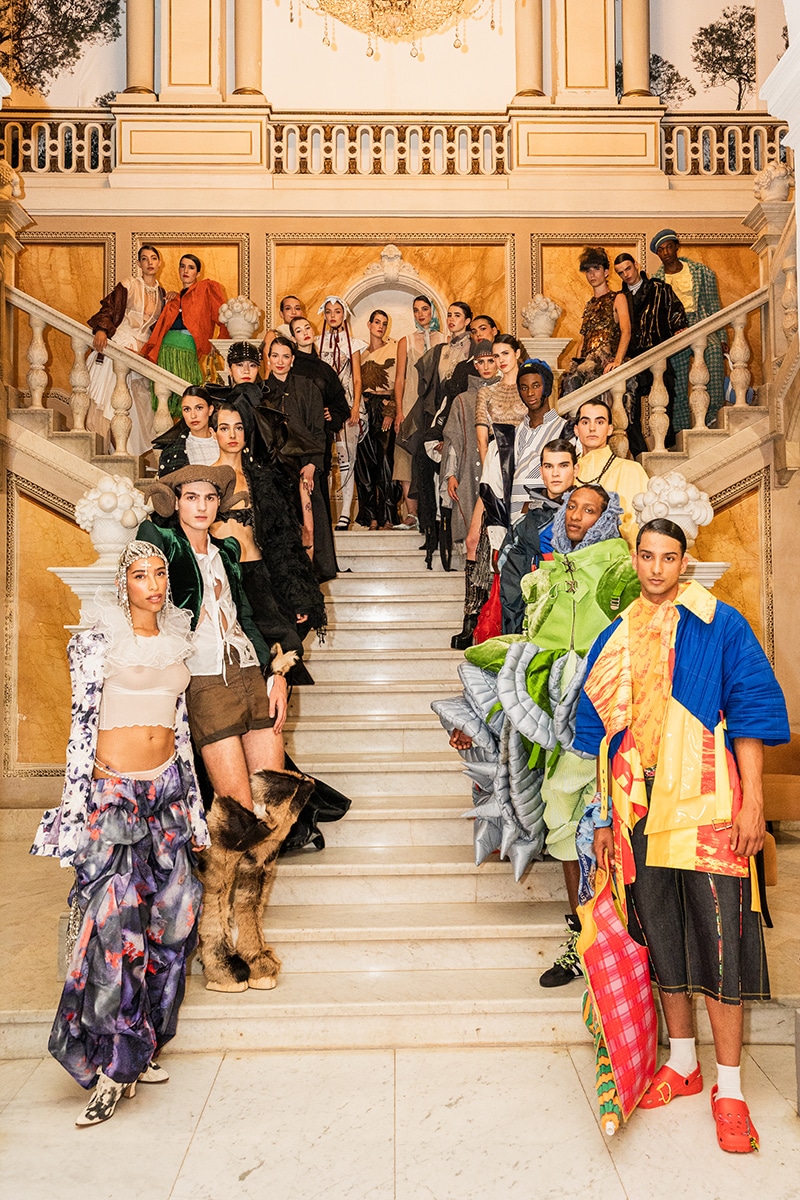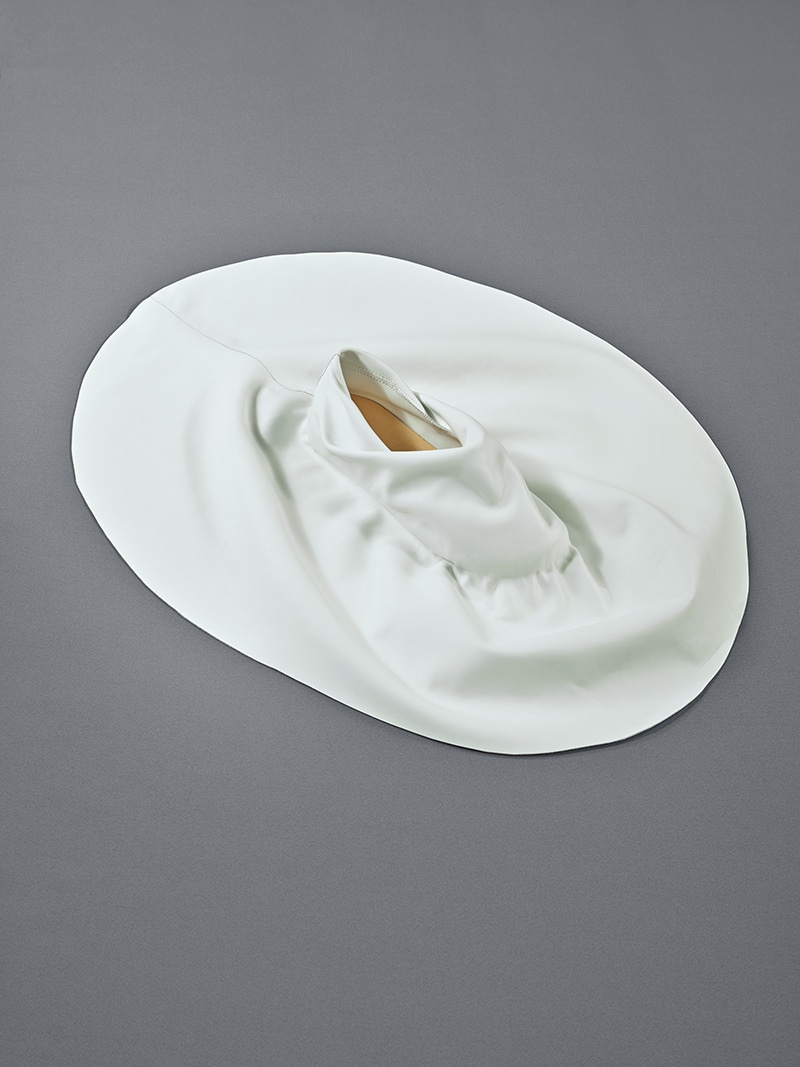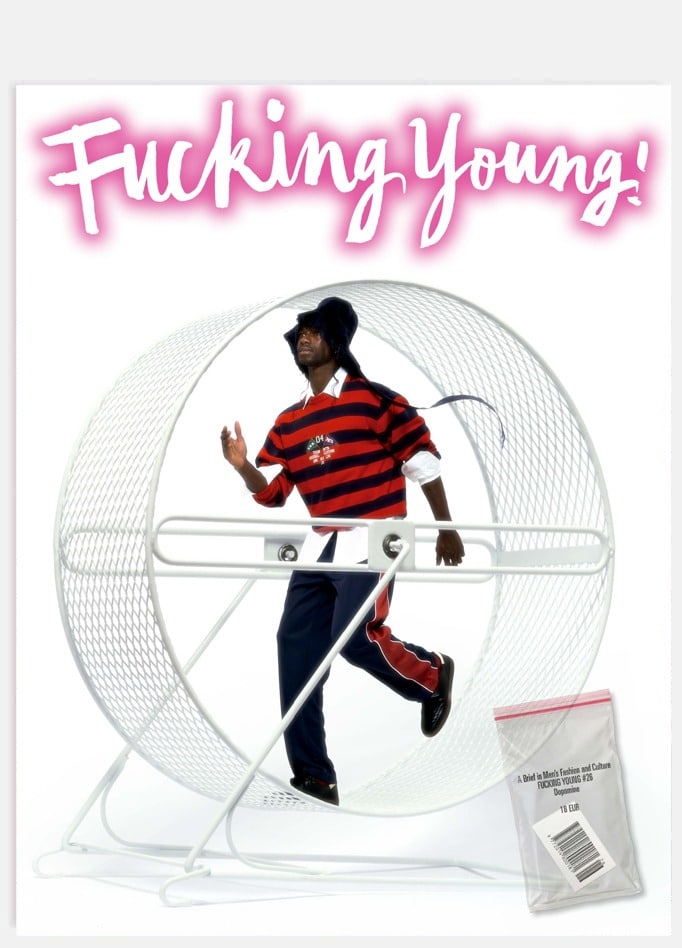JULIUS SS 17 [ Knives; ]
by Valerio Coretti


























Julius pushes the boundaries of avant-garde fashion and plays by his own set of rules, avoiding the chiseled and hieratic forms which characterized his past collections, and creating a more direct and socially-critical type of collection. Tatsuro Horikawa brings his street warriors onto the runway, an army whose only objective is to subvert every certainty regarding the brand. The connections to his past, if subtle, are there: the waterproof-boots, the colour pallet defined by the stark contrast of black and white and mitigated by shades of gray. The rest, however, opens many broad new horizons available for the brand, before our very eyes. It’s a closer look into streetwear, clearly inspired by the 80’s and 90’s street and hip hop culture: stocking hats, sleeveless hoodies, legwarmers and baggy pants: “We were tired of limits and we wanted to expand our comfort zone.” – Tatsuro told me, during a conversation we had in Paris.
The prints which decorate hoodies, belts, leggings and bandanas are an homage to the artist which inspired the collection, Karl O’Connor, aka Regis. “The idea of paying homage to the British Murder Boys, Karl’s group, and the recent happenings in England, was a bizarre coincidence; many have wondered if I had done it on purpose, but the collection had been ready weeks before Brexit happened.” – He continued.
The news outlets, while paying tribute to Regis and his legendary British band, perceive a subversive criticism towards materialism and consumerism, and see this reflected on the collection. The uniformity and coherence of the presented designs, which effectively brings to mind a group of rebels from the suburbs of Brooklyn, is all thanks to the new stylist hired by the brand, who has managed to further streamline the visual language of the collection. “We wanted the show to be something new and, in a certain sense, experimental, and being able to have models walk off-schedule for the first time has given us the freedom necessary to express ourselves and dare to the best of our abilities” – Horikawa concluded.
Even the show was part of the surprise, having recreated a perfect underground ambiance. The public found itself immersed in very different experience from that of a more canonical fashion show. Everything was aimed at imitating the atmosphere of a back-alley club: the post-industrial location, the setting, the live soundtrack, and most of all the fact that the runway and public were only separated by safety barriers and tape. Everything worked together to make this show unmissable. This event opens a new chapter for the brand, which is definitely a welcome change. The avant-garde scene has suffered greatly in these past few years from stagnation, the absence of creativity and most of all, the unwillingness to break the mold and shake up clichés. This collection breathes new life and introduces new ideas, maybe even opening a new dialogue with upcoming brands like Vetements or Gosha and pushing the closed and self-referencial avant-garde movement into a more dynamic direction.
Could this be the beginning of a new golden age?
Introducing SHUTTERS
Coach Fall/Winter 2016 Campaign
Alan Crocetti’s latest collection, Hard Core Fantasy, is a deeply personal exploration of identity, desire, and self-protection through jewelry.
Francisco Terra’s 15th-anniversary collection for Maldito is a midnight ride through memory, a fever dream of teenage longing stitched into lace and rhinestones.
LARUICCI’s Spring/Summer 2026 collection bottles the chaotic charm of early 2000s Hollywood.
PRISMA’s latest collection isn’t about hiding but about what happens when you stop trying to.
HEREU is marking its 10th anniversary with Memory. A Play of Twos, a photobook that captures a decade of creative exchange.
In a time of movement and uncertainty, Estelita Mendonça’s Spring/Summer 2026 collection questions what clothing means when stability feels like a luxury.
We talked with Ziggy Chen to learn more about the thinking behind PRITRIKE, his process and his relationship with materials.
Take a look at C.R.E.O.L.E’s Spring/Summer 2026 backstage, captured by the lens of Spencer Stovell during Paris Fashion Week, in exclusive for Fucking Young!
Glenn Martens’ Maison Margiela Artisanal collection doesn’t just borrow from history, but it fractures it, reassembles it, and wears it like a second skin.
This weekend, Eastpak reminded us that backpacks aren’t just carriers of belongings – they’re carriers of stories, creativity, and identity
For Spring/Summer 2026, A. A. Spectrum finds inspiration in quiet moments, the natural ease of creativity, and the unforced beauty of renewal.
For Spring/Summer 2026, AV Vattev’s Bohème collection takes its cues from two iconic worlds: the effortless cool of French New Wave cinema and the raw energy of British music subcultures.
Concrete Husband talks about turning psychological collapse into industrial soundscapes, confronting darkness on Berghain’s dancefloor, and why dark techno is, above all, sexy.
Maciej Poplonyk photographed by Arthur Iskandarov and styled by Egor Telenchenko, in exclusive for Fucking Young! Online.
Titled “YOU DO NOT BELONG HERE,” the visuals strip away ambiguity, trading fantasy for sharp, cinematic storytelling.
We met Yoon Ambush – Co-founder and Creative Director of AMBUSH – in Paris during Men’s Fashion Week.
Les Benjamins has turned its attention to the tennis court with a new collection that mixes sport and style.
GUESS JEANS has officially arrived in Tokyo, opening its first Asian flagship store in the heart of the city’s fashion district.
WHOLE is a pilgrimage for the global queer community, a temporary world where joy, radical acceptance, and self-expression reign supreme.
Alexis Otero captured by the lens of Lucas Lei, in exclusive for Fucking Young! Online.
Levi’s® is celebrating Oasis’ long-awaited reunion with a new collection that combines the band’s iconic style with classic denim.
There’s no bitterness in the heartbreak here, just the sense that longing isn’t defeat, but proof you’re alive.
We had the chance to catch up with Ohio-born, Brooklyn-based designer Kody Phillips in his Paris Fashion Week showroom where he unveiled his Spring/Summer 2026 collection.
Dean and Dan doubled down on their love of fashion’s most dramatic moments, remixing 80s power dressing, 90s grunge, and 2000s excess into something entirely their own.
Gerrit Jacob’s latest collection, GAME OVER, isn’t about surviving the wild but about surviving the grind.
Telekom Electronic Beats (TEB) and 032c are turning 25, and they’re celebrating with a capsule collection and an installation by Harry Nuriev. Titled All is Sound.
Cult Korean menswear brand THUG CLUB teamed up with designer IZZY DU for an unforgettable dinner and afterparty at the mythical Lapérouse during Paris Fashion Week.
Jonathan Anderson has always treated fashion like a carefully assembled collection, mixing the unexpected, trusting his instincts, and binding it all together with a strong point of view.
The Palau Reial de Pedralbes provided the perfect backdrop as IED Barcelona unveiled its 21st Fashioners of the World showcase.
This season, Camper unveils its first collaboration with ISSEY MIYAKE’s Peu Form, designed by Satoshi Kondo.



























